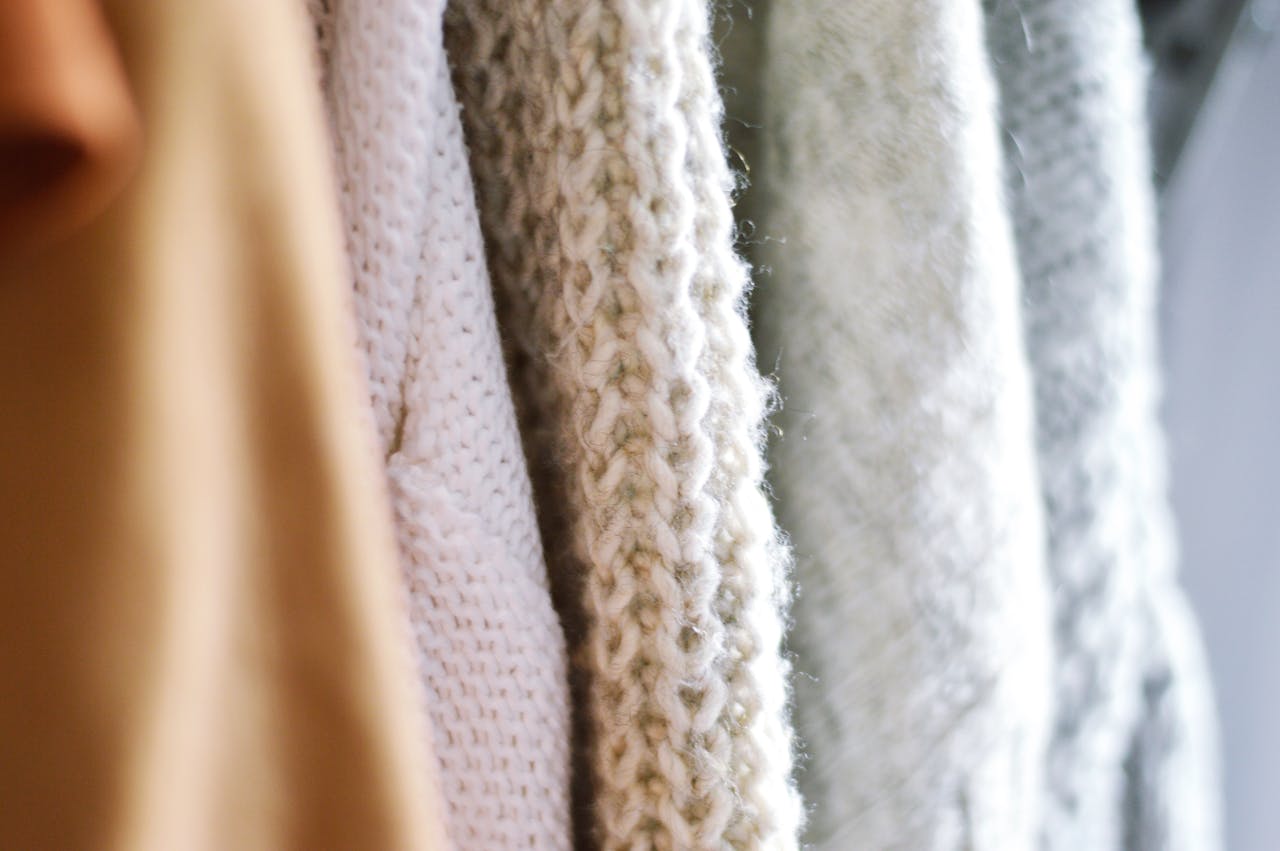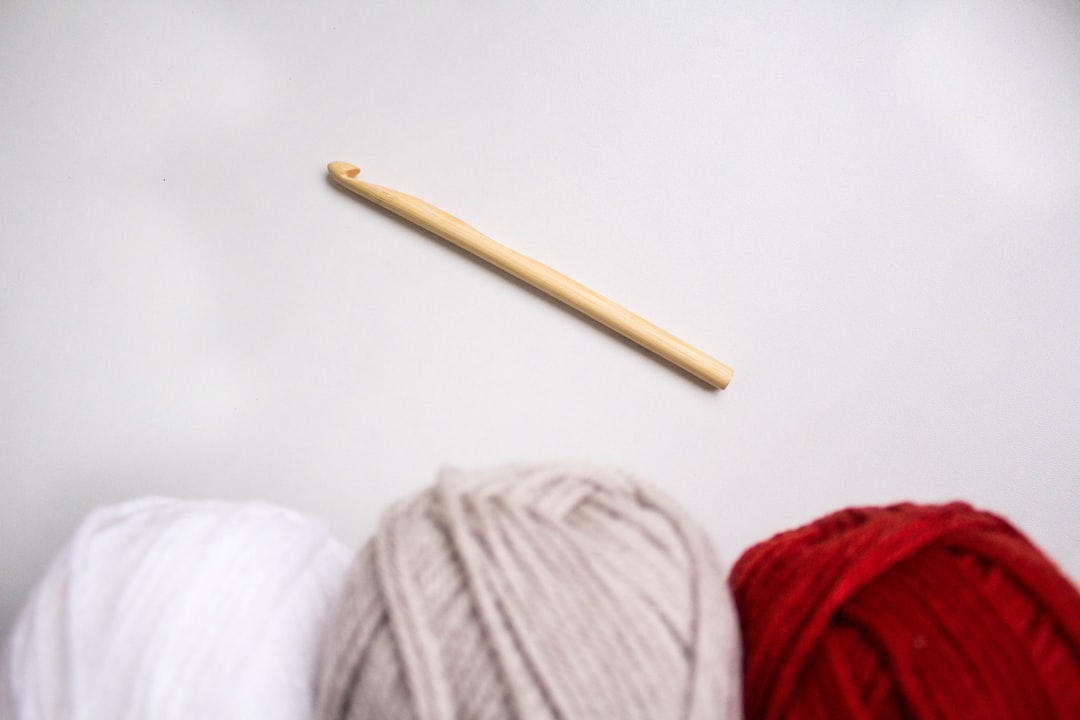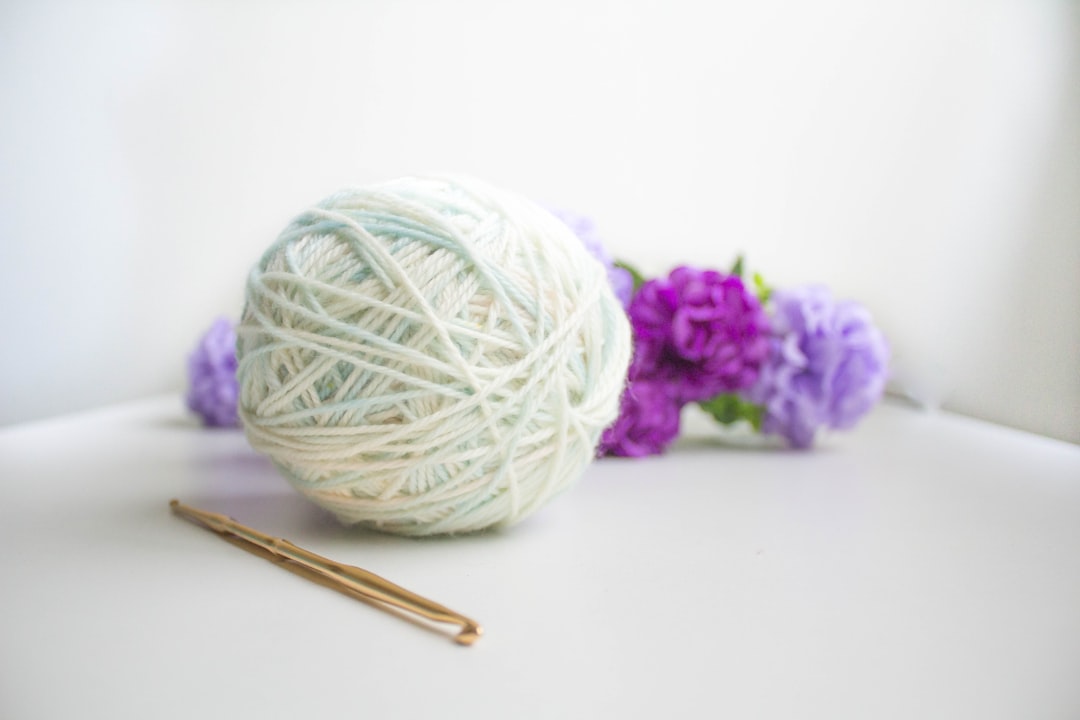Overview of Merino Wool Garments
Merino wool garments are meticulously crafted from the wool of Merino sheep, known for producing fibres that are finer and softer than traditional wool, enhancing the comfort level when worn against the skin. An example that highlights the superior quality of Merino wool is its breathability, which allows it to regulate body temperature effectively in both cold and warm conditions, making it an ideal choice for various outdoor activities. The natural crimp of Merino wool fibres creates tiny air pockets within the fabric, providing excellent insulation and warmth without compromising on weight or bulkiness, a feature that sets it apart from other types of wool.
When considering the benefits of Merino wool garments, it’s essential to acknowledge their versatility in terms of odour resistance and suitability for diverse climates. For instance, Merino wool’s natural odour-resistant properties ensure that the fabric stays fresh for longer periods, reducing the need for frequent washing and ultimately extending the lifespan of the garment. An illustrative example can be seen in the context of outdoor enthusiasts who can wear Merino wool base layers for extended periods without the worry of unpleasant odours, thanks to the wool’s inherent antibacterial characteristics. Moreover, the adaptability of Merino wool to various climates makes it a go-to choice for travellers and adventurers seeking clothing that can perform well in both hot and cold environments, providing comfort and performance in a single garment.
Merino wool garments are not only known for their luxurious feel and exceptional quality but also for their environmental benefits. Merino wool is a sustainable choice compared to synthetic fibres, as it is biodegradable and renewable, aligning with eco-conscious consumers seeking environmentally friendly clothing options. Additionally, Merino wool’s biodegradability means that at the end of its lifecycle, it can naturally decompose without harming the environment, making it a responsible choice for those looking to reduce their ecological footprint. By opting for wool garments, individuals can enjoy the comfort and style of high-quality clothing while supporting sustainable practices in the fashion industry.
Understanding Merino Wool
Merino wool is highly regarded for its exceptional quality and softness, which distinguishes it from conventional wool varieties. For instance, the fine and delicate texture of Merino wool fibres makes them a preferred choice for garments that come in direct contact with the skin. This luxurious feel is a key reason why Merino wool is a popular material for base layers and activewear. In addition to its softness, Merino wool is also a breathable fabric that effectively regulates body temperature, ensuring wearers stay comfortable in various climates.
Moreover, the unique natural crimp of Merino wool fibres creates tiny air pockets within the fabric, providing excellent insulation and warmth. This innate property makes wool garments versatile and suitable for both cold and warm conditions. The insulation offered by Merino wool allows the fabric to trap heat close to the body in colder weather while remaining breathable enough to prevent overheating in warmer temperatures. As a result, Merino wool is a practical choice for individuals seeking comfort, functionality, and style in their clothing.
Merino wool garments are not only prized for their softness and breathability but also for their ability to resist odours and regulate body temperature effectively. Research has shown that the natural properties of Merino wool make it an ideal choice for activewear and outdoor clothing, as it can keep wearers comfortable in various weather conditions. Additionally, the fine fibres of wool create a luxurious texture that feels gentle against the skin, making it a sought-after material for those with sensitive skin or allergies. By understanding the unique characteristics of Merino wool, individuals can make informed choices when selecting clothing that offers both comfort and performance benefits.
Washing Guidelines
When it comes to washing your beloved Merino wool garments, following the right guidelines is key to preserving their quality and longevity. Always opt for a gentle hand wash or use the delicate cycle on your washing machine to prevent any damage to the delicate fibres of the wool. For temperature settings, cold water is your best friend when washing Merino wool, as hot water can cause shrinkage and compromise the fabric’s structure over time. By sticking to cold water, you can ensure that your Merino wool pieces maintain their shape and integrity wash after wash.
Moreover, beyond the washing method, it’s crucial to handle your wool garments with care. Avoid the temptation to wring or twist them during the washing process, as this can lead to stretching and misshaping of the fabric, affecting the overall fit and look of your clothing. Instead, gently press out excess water from the garment using a towel before air-drying to speed up the drying process without compromising the quality of the wool. By following these washing guidelines diligently, you can enjoy your Merino wool pieces for years to come, looking as good as new after each wash.
Proper washing techniques not only maintain the quality of wool garments but also contribute to their longevity and performance. Research suggests that washing Merino wool in cold water helps preserve the natural properties of the fabric, such as its breathability and softness, ensuring that wearers continue to experience the benefits of this luxurious material. Additionally, using a mild detergent specifically designed for delicate clothing can prevent damage to the fibres of the wool, extending the lifespan of the garment. By incorporating these washing guidelines into your garment care routine, you can ensure that your wool pieces remain in pristine condition, ready to be worn and enjoyed for years to come.
Drying Techniques
When it comes to drying your precious Merino wool garments, air-drying them flat is not just a suggestion but a crucial step in maintaining their quality and fit. By laying them out on a clean, dry surface, you prevent any unnecessary stretching that could occur if they were hung up to dry. Additionally, avoiding direct sunlight during the drying process is essential to prevent the fabric from losing its vibrant colours and becoming faded over time. For those in a hurry, a handy tip is to gently blot excess water from the garment using a towel before laying it out to dry. This method helps speed up the drying process without subjecting the delicate fibres to vigorous wringing or twisting, ensuring your Merino wool pieces stay in top-notch condition.
An excellent way to visualise the importance of air-drying Merino wool garments is by considering the structure of the fabric. Wool fibres have a natural crimp that creates tiny air pockets within the material, providing insulation and warmth. By allowing your garments to air-dry flat, you are essentially preserving these unique properties that make Merino wool such a sought-after textile for its comfort and performance benefits. Moreover, the gentle care taken during the drying process reflects your commitment to prolonging the lifespan of your Merino wool items, reducing the need for frequent replacements and contributing to sustainability efforts in the fashion industry. Remember, the extra effort put into drying your wool pieces the right way will pay off in the long run, keeping them soft, cosy, and looking as good as new for many wears to come.
Proper drying techniques play a significant role in maintaining the quality and shape of wool garments. Studies have shown that air-drying flat is the preferred method for drying wool, as it helps prevent stretching and misshaping of the fabric. Additionally, avoiding direct sunlight during the drying process can preserve the colours and integrity of the wool, ensuring that your garments retain their original vibrancy and softness. By adopting these drying techniques as part of your garment care routine, you can extend the lifespan of your Merino wool pieces and continue to enjoy their luxurious feel and performance benefits for years to come.
Stain Removal
When it comes to stain removal from Merino wool garments, acting swiftly is key to preventing stains from becoming permanent. For instance, if you accidentally spill coffee on your favourite wool sweater, gently blot the area with a clean cloth to absorb the liquid before applying a mild soap and cool water solution to the affected area. By addressing stains promptly and with care, you can increase the likelihood of successful removal without causing damage to the delicate fibres of the wool.
Moreover, it’s essential to be cautious when treating tough stains on Merino wool. For example, if you encounter a grease stain on your Merino wool scarf, avoid using hot water or harsh chemicals that could further set the stain. Instead, opt for a specialised wool stain remover that is designed to tackle specific types of stains effectively while being gentle on the fabric. Always remember to test any stain removal method on a hidden area of the garment first to ensure it does not cause discolouration or damage before proceeding with the treatment.
In addition to immediate stain removal, preventive measures can also help maintain the pristine condition of wool garments. Research suggests that spot-cleaning stains as soon as they occur can prevent them from setting into the fabric and becoming more challenging to remove. Moreover, using mild soap and cool water for spot cleaning ensures that the delicate fibres of the wool are not compromised during the stain removal process, preserving the quality and appearance of the garment. By incorporating these stain removal techniques into your care routine, you can effectively address stains on your wool items and keep them looking fresh and clean for extended periods.
Storage Tips
Proper storage is crucial in maintaining the quality and lifespan of your beloved wool garments. When storing these delicate pieces, it is essential to choose a cool and dry location, away from direct sunlight, as exposure to sunlight can lead to discolouration and damage over time. For optimal care, consider folding your Merino wool garments instead of hanging them. Hanging may cause the fabric to stretch and lose its shape, especially under the weight of the garment over an extended period.
Furthermore, to shield your Merino wool items from dust and potential moth damage, opt for breathable garment bags or cotton storage bags. These protective covers not only keep your garments clean but also provide a barrier against environmental elements that could compromise the integrity of the wool fibres. By investing in proper storage solutions, such as garment bags, you can ensure that your wool pieces remain in pristine condition for years to come. Remember, the way you store your Merino wool garments plays a significant role in their longevity and overall quality, so taking these simple storage precautions can go a long way in preserving your cherished pieces.
Proper storage practices are essential for maintaining the quality and appearance of Merino wool garments over time. Research indicates that storing Merino wool in well-ventilated areas away from direct sunlight can prevent discolouration and damage to the fabric. Additionally, using breathable garment bags or cotton storage bags can protect Merino wool items from dust and pests, ensuring they remain in top condition for extended periods. By following these storage tips and investing in suitable storage solutions, you can safeguard your Merino wool pieces and enjoy them for years to come, looking as good as the day you first acquired them.
Environmental Impact
Caring for Merino wool garments not only benefits the wearer but also contributes to environmental sustainability. By washing Merino wool less frequently, individuals can reduce water consumption and environmental impact associated with garment care. Studies have shown that washing less frequently can lead to a significant decrease in water usage, aligning with conservation efforts to reduce water waste in the fashion industry. Additionally, Merino wool’s biodegradability and renewable nature make it a sustainable choice compared to synthetic fibres, further reducing the environmental footprint of clothing production and disposal.
Proper care and maintenance of wool garments can have a substantial impact on reducing waste and promoting responsible consumption habits. Research data suggests that extending the lifespan of clothing through proper care practices can significantly reduce the need for frequent replacements, ultimately decreasing the amount of textile waste generated. Moreover, caring for wool items by using organic detergents and avoiding harsh chemicals can minimise environmental pollution and contribute to a healthier ecosystem. By making conscious choices in caring for wool garments, individuals can play a part in sustainable fashion practices and help mitigate the environmental impact of the clothing industry.
Caring for Merino wool garments by washing them less frequently and following recommended care guidelines can significantly reduce the environmental impact of clothing production and maintenance. Research indicates that washing Merino wool less frequently can lead to water savings and decreased energy consumption, contributing to overall sustainability efforts in the fashion industry. Additionally, choosing organic detergents for washing wool can further reduce the environmental footprint by avoiding harmful chemicals that can contaminate water sources and ecosystems. By adopting eco-friendly care practices for wool garments, individuals can actively participate in promoting environmental conservation and sustainable fashion choices.
Moth Prevention
To prevent moth damage and preserve the quality of your wool garments, proactive measures can be taken to safeguard your clothing items. Regularly inspecting and cleaning storage areas where Merino wool garments are kept can help identify and address any potential moth infestations before they cause damage. An example of effective moth prevention is using natural moth repellents like lavender sachets or cedar blocks in storage areas to deter moths from nesting and damaging your wool pieces. These natural repellents not only protect your garments but also add a pleasant scent to your storage spaces, creating a win-win solution for moth prevention.
In addition to natural moth repellents, maintaining cleanliness in storage areas and periodically airing out your wool garments can also help prevent moth damage. Research suggests that keeping storage spaces free of dust and debris can discourage moth activity and protect your clothing items from potential harm. Furthermore, airing out your wool garments for a few hours every few months can refresh them naturally and prevent moths from being attracted to the fabric. By incorporating these preventative measures into your garment care routine, you can effectively safeguard your Merino wool items from moth damage and enjoy them for years to come.
Repair and Maintenance for Merino Wool Garments
Repairing and maintaining wool garments is essential to extend their lifespan and keep them looking their best. Small holes or tears in wool garments can be easily repaired using a wool repair kit available at most craft stores or by a professional tailor. An example of effective repair is using matching yarn and a darning needle to mend any damage seamlessly, ensuring that the repaired area blends in with the rest of the fabric. By addressing minor damages promptly, you can prevent further deterioration of the garment and prolong its wearability.
Moreover, preventing pilling on Merino wool garments is key to maintaining their pristine condition. When washing Merino wool items, turning them inside out can reduce friction during the wash cycle and minimise the likelihood of pilling. Additionally, being mindful of how you wear and care for your Merino wool garments can help prevent pilling, ensuring that the fabric remains smooth and free of unsightly bobbles. By following specific care instructions provided by the manufacturer and incorporating preventative measures into your garment care routine, you can effectively maintain the quality and appearance of your Merino wool pieces for years to come.
Proper maintenance of Merino wool garments not only preserves their quality but also minimises the need for frequent replacements, reducing waste in the fashion industry. Studies have shown that following care instructions provided by manufacturers can significantly extend the lifespan of clothing items, reducing the environmental impact of textile production and disposal. Additionally, preventative maintenance measures, such as repairing small holes and preventing pilling, can help keep Merino wool garments in top condition for longer periods, ensuring that they remain a staple in your wardrobe. By prioritising the repair and maintenance of your Merino wool items, you can contribute to sustainable fashion practices and enjoy the longevity of your favourite pieces.
Conclusion
In conclusion, caring for your Merino wool garments is not only a way to maintain their quality and longevity but also a step towards environmental sustainability. By following the recommended care guidelines, such as washing with cold water, air-drying flat, and using organic detergents, you can ensure that your Merino wool pieces remain in pristine condition for years to come. Additionally, adopting preventative measures like using natural moth repellents and repairing minor damages promptly can further prolong the lifespan of your garments and reduce waste in the fashion industry.
Moreover, by understanding the unique properties of Merino wool, such as its softness, breathability, and odour resistance, you can make informed choices when caring for and wearing your garments. Research data supports the benefits of Merino wool in terms of comfort, performance, and sustainability, making it a valuable addition to any wardrobe. By incorporating environmentally friendly practices into your garment care routine and prioritising proper maintenance, you can enjoy the luxurious feel and durability of wool while contributing to a more sustainable fashion industry.
Shop Online at Pattersons Boutique for Merino Wool Garments











